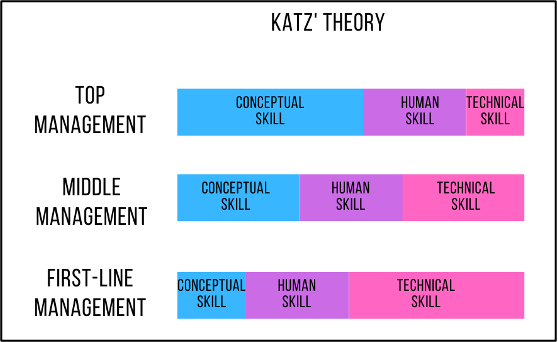Discover the leader’s role in fostering employee development through mentoring, tailored leadership styles, and opportunities for growth. Explore theories, strategies, and insights to enhance communication, teamwork, critical thinking, and workplace innovation.

A considerable amount of research has identified the skills employers seek when hiring recent university graduates. These typically go beyond technical training and disciplinary knowledge to emphasize communication, critical thinking, problem-solving, teamwork, the application of knowledge to real-life situations, and ethical behavior (Andrade et al., 2024; Association of American Colleges & Universities, 2002; Finley, 2023; Hart Research Associates, 2015, 2018).
When I first started university, my major was library science. I took a couple of courses and decided it wasn’t for me. What was taught in those courses is completely outdated now. An aspect of the library acquisitions course, for example, was how to complete forms to purchase library materials. This is a technical skill not requiring much critical thinking or problem solving. Consider how library research has changed over time. Long gone are the days of card catalogs, microfiche, and journal indexes.
Had I not acquired what some refer to as soft skills and others as 21st century, cross-cutting, transversal, or lifelong learning skills as a critical aspect of my university experience, and had I not continued to develop these skills in professional contexts, I would not have been very successful in my career.
Katz’ (1974) classic management theory posits that entry-level management positions entail primarily technical skills (job-specific knowledge and abilities) while human skills (understanding, leading, and managing people) are important at all management levels with conceptual skills (analyzing, problem solving, strategizing, innovating, and creating) more central to higher level management.

Katz’ theory assumes that entry level management positions require mostly technical skills; however, current research strongly indicates that employers seek conceptual and human skills from recent university graduates even for entry level positions (AAC&U, 2002; Finley et al., 2021; Finley, 2023; Hart Research Associates, 2015, 2018). While competency is desirable in all areas, these skills develop over time and with experience.
How can individuals develop these skills and what is the role of their managers and leaders? Individuals begin to develop essential skills in higher education, but leaders must provide further development opportunities in the workplace. (Andrade et al., 2024).
Provide opportunities for growth – look for ways those you manage or lead can progress in their careers. What skills do they need or want to develop? What training can you provide? What are their interests and goals? How can you mentor and support them? How can you help them see their potential?
In my career, I have benefited from informal mentors, usually supervisors, who believed in me and invited me to take on roles that were sometimes slightly beyond my current capacity but which I felt I could do based on their encouragement and confidence in me. I have also benefited from supervisors who gave me considerable autonomy to pursue my responsibilities and contribute to the organizations where I have worked. Another motivating factor contributing to a rewarding career has been the provision of opportunities to further develop my knowledge and skills through professional conferences as well as to contribute my own expertise in these settings.
Vary leadership approaches – path-goal theory accounts for ways in which leaders clarify and communicate organizational goals, remove obstacles that hinder progress, provide support through guidance and coaching, and tailor their leadership style to match the needs of followers (House, 1996). Some employees need more support than others. Leaders must determine employees’ self-views of their abilities, their attitudes toward those in power, and the types of tasks they perform.
Path-goal leadership entails four styles:
As managers and leaders identify opportunities for growth and apply appropriate leadership styles, they support the development of highly valuable skills such as improved communication, teamwork, critical thinking, problem-solving, and innovation. They prepare employees for advancement in management by helping them expand their human and conceptual competences. As employees develop in their careers and gain experience, expertise, and confidence, they transition from needing leader direction to participating in organizational problem solving and innovation.
Women may need more encouragement and mentoring than men. They may question their fit in an organization, particularly in male-dominant work contexts. Research has found that women are more engaged in the workplace than men except in senior leadership positions where they experience isolation, leading to lack of longevity in these roles (Frumar & Truscott-Smith, 2024). Men tend to have stronger career aspirations, but women have equal occupational self-efficacy (Hartman & Barber, 2020), meaning that women believe in their abilities but may need more encouragement to aspire to higher management as well as more development opportunities and clearer pathways.
The path-goal leadership lens helps leaders identify ways in which they can remove barriers and provide support to help followers achieve personal goals leading to organizational goal achievement. Leaders need to consider individual differences as well as gender differences as they adapt their approaches.
References
Andrade, M. S., Seeley, E., & Miller, R. M. (2024). The value of cross-cutting skills - hiring managers’ views. Industry and Higher Education, 0(00) 1–11. https://doi.org/10.1177/09504222241297536
Association of American Colleges & Universities (2002) Greater expectations: A new vision for learning as a nation goes to college. Association of American Colleges & Universities. https://www.aacu.org/sites/default/files/files/publications/GreaterExpectations.pdf
Finley, A., Aborn, M., Ruddy, S., & Miller, K. (2021, September). Is college worth the time and money? It depends on whom you ask. Association of American Colleges & Universities. https://www.aacu.org/research/is-a-college-degree-worth-it-despite-the-time-and-the-money-involved
Finley, A. P. (2023). The career- ready graduate. What employers say about the difference college makes. American Association of Colleges and Universities and Morning Consult. https://dgmg81phhvh63.cloudfront.net/content/user-photos/Research/PDFs/AACU-2023-Employer-Report.pdf
Frumar, C., & Truscott-Smith, A. (2024, July 9). Women’s engagement advantage disappears in leadership roles. Gallup Workplace. https://www.gallup.com/workplace/646748/women-engagement-advantage-disappears-leadership-roles.aspx#:~:text=Despite%20women%20almost%20universally%20exhibiting,to%20lose%20star%20female%20employees
Hart Research Associates (2015, January 20) Falling short? College learning and career success. Hart Research Associates. https://www.aacu.org/sites/default/files/files/LEAP/2015employerstudentsurvey.pdf
Hart Research Associates (2018, July) Fulfilling the American dream: Liberal education and the future of work. Hart Research Associates. https://www.aacu.org/sites/default/files/files/LEAP/2018EmployerResearchReport.pdf
Hartman, R. L., & Barber, E. G. (2020). Women in the workforce: The effect of gender on occupational self-efficacy, work engagement and career aspirations. Gender in Management, 35(1), 92–118. https://doi.org/10.1108/GM-04-2019-0062
House, R. J. (1996). Path-goal theory of leadership: Lessons, legacy, and a reformulated theory. The Leadership Quarterly, 7(3), 323–352.
Katz, R. L. (1974). Skills of an effective administrator. Harvard Business Review, 52(5), 90–102.